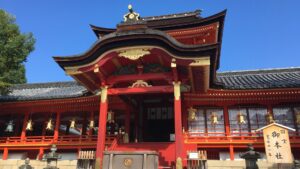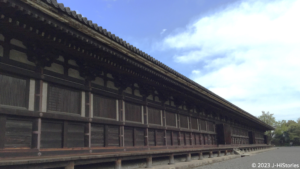The Katsura Imperial Villa, authentically beautiful architecture
Situated in the southern province of Kyoto, along the picturesque Katsura River, the Katsura Imperial Villa, a masterpiece of beauty, served as a detached villa of two aesthetic crown princes: Prince Toshihito (1579~1629, 八条宮智仁親王) and his son, Prince Toshitada (1619~1662, 八条宮智忠親王). Its construction started in 1628 and was completed in 1658 during the transition from the Warring Period (1493-1573) to the Edo period (1603~1868). Despite its calculated beauty, it creates a sense of beauty and harmony. Notably, in 1953, the renowned German architect Bruno Taut eloquently described it as "so beautiful that it almost brings tears to my eyes." This stylish and dynastic villa subtly yet boldly expresses its great beauty, enchanting every visitor who steps foot inside.
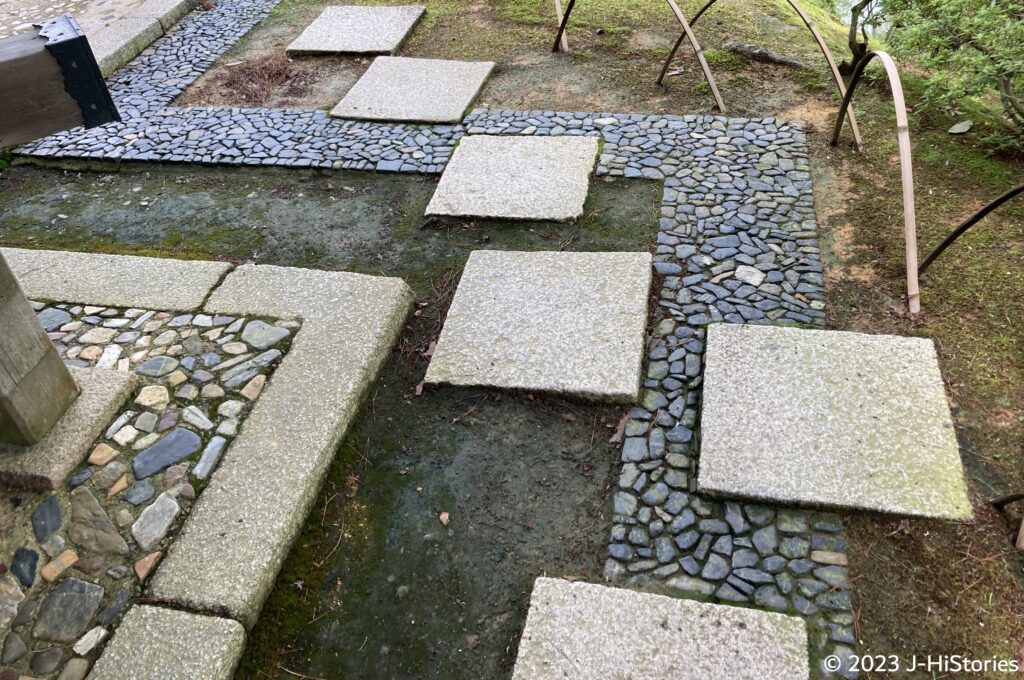
The functional beauty of the garden path created by stone
The Katsura Imperial Villa is full of functional beauty, especially in the use of stone. There are some highlights: 'Arare-koboshi' paving stone technique, three different types of paving stone design called “Shin-Gyo-So” to suit the dignity of each building, and the continuity between the building and the path through the same “Ichimatsu” design of sliding door and paving stone.
Arare-koboshi pathway
Arare-koboshi spilled hailstones, is a garden path built with paving and hardened cobblestones. It is believed that this finishing of the path was contrived for the imperial visit of the retired Emperor, Gomizunoo in, to prevent the sandals of the palanquin bearers from becoming solid from the dirt after rain. About 130,000 stones are carefully selected from sedimentary rocks (chert) that are black, vertically long, and slick at the upper end-gathered locally from along the Katsura-gawa River. Although the "Arare-koboshi” garden path has a simple structure in which the stones were simply driven into the ground without using plaster, the vertically long stones connect and engage with each together, fixing themselves in the ground. Masons have built up beautiful joint patterns for the pavement by arranging each together, fixing themselves in the working out a jigsaw puzzle.
Katsura Imperial Villa’s information panel

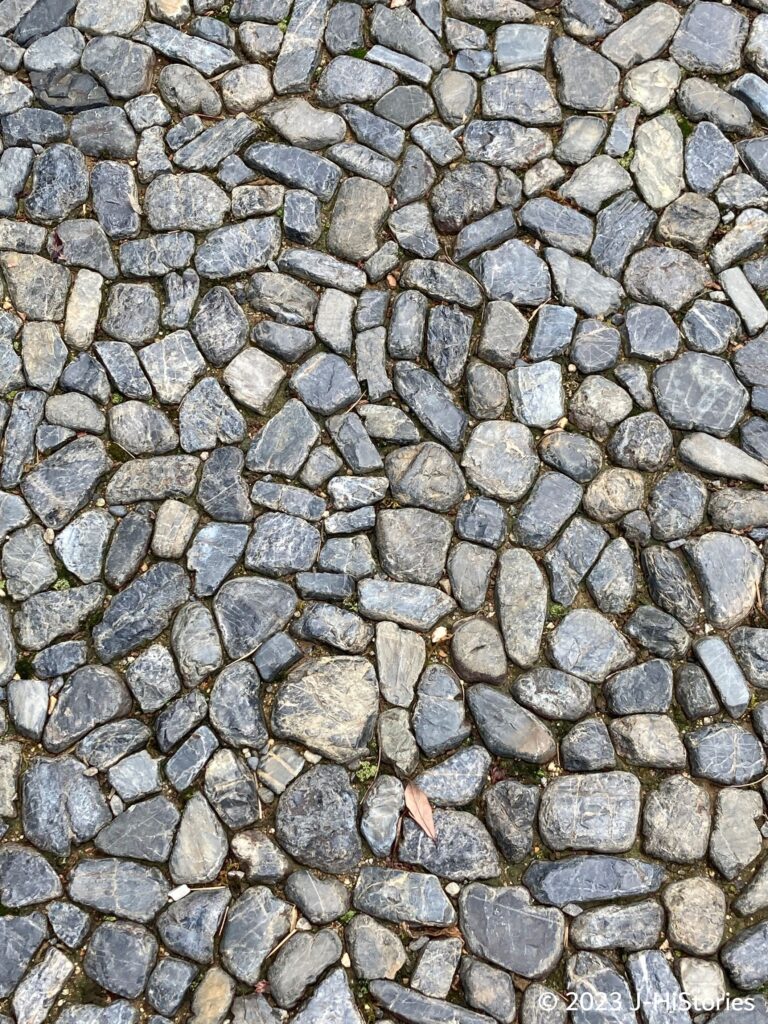

“Shin-Gyo-So” classification of the formality
The term 'Shin-Gyo-So' was originally used to describe the writing styles used in Japanese calligraphy: "Shin(真)" for standard script, "Gyo(行)" for collapsed style, and "Sou(草)" for further collapsed style. It is also used to express the formality of the tea ceremony, flower arrangement, architecture of gardens, and so on.
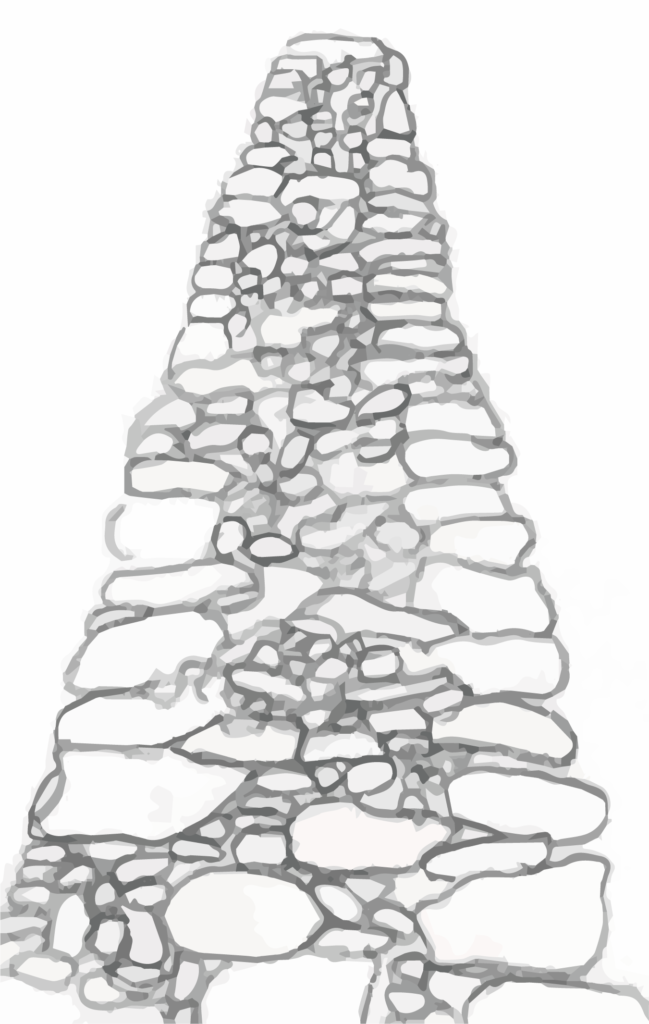


- Shin: The stone path toward the entrance of Koshoin, a reception building, is composed entirely of hewn stones with angles, such as rectangular and trapezoidal, creating a dignified atmosphere.
- Gyo: The stone path in front of the outer waiting seat near the teahouse Shokintei, using long, narrow-hewn stone and natural stone, creates both a tense and soft atmosphere.
- So: The stone path in front of Shoiken, a country-style teahouse, uses seven types of natural stone, creating a very soft atmosphere.
The continuity between Shokin-tei and its stone path
The indigo blue and white Ichimatsu-designed fusuma (sliding doors) adorn the traditional tatami-mat rooms, adding a touch of stylish sophistication to the high-class teahouse, Shokin-tei. The functional beauty blends seamlessly with the blue and white stepping stones that lead from the room to the garden, creating continuity between the two. Each element weaves harmoniously together to create an unparalleled atmosphere, leaving visitors in awe of the timeless appeal of Katsura Imperial Villa.

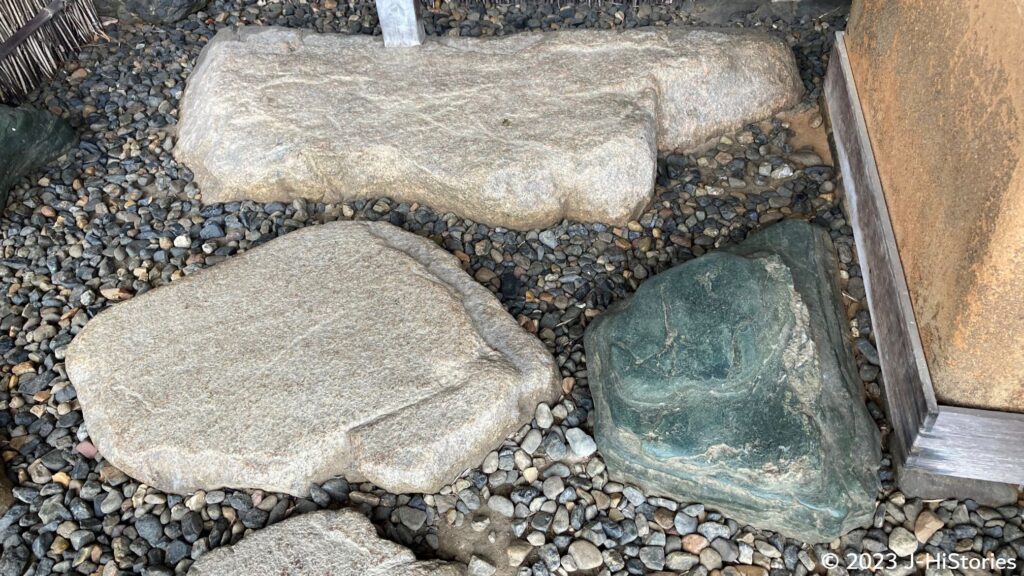
Gifted Princes, Toshihito, and Toshitada
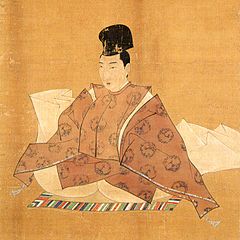
(Source: wikimedia)

(Source: wikimedia)
Prince Toshihito, the grandson of the 106th Emperor Ogimachi (1517-1593, 正親町天皇), was gifted in reading and writing from an early age. At a Waka poetry party, at the age of only ten, he composed a Waka in front of Emperor Goyozei and was impressed by the participants. Prince Toshihito received the secret of Kokin Waka from Hosokawa Yusai, a powerful lord and a leading figure in the arts and culture of his time. Kokin Wakashū is Japan's first collection of Waka, compiled by order of Emperor Daigo in 905, and has had a profound influence on Japanese culture. The secret of Kokin Waka is a special interpretation of the poetry that is passed down from master to disciple. Through his interactions with prominent cultural figures of the time, Prince Tomohito learned deeply about traditional Japanese art and aesthetics, which he reflected in the construction of the Katsura Imperial Villa.
Tomohito's eldest son, Prince Tomotada, excelled in learning and literature from an early age, studying calligraphy, Waka poetry, and the tea ceremony, and grew up to become a leading cultural figure. Beginning around 1641, he began to rebuild the villa he had once visited with his father, repairing the Koshoin, Chushoin, and its sliding doors with the work of the three Kano School artists (Tanyu, Naonobu, and Yasunobu), who were the best painters of the time.
The following year, in 1642, he married Tomiko, daughter of Maeda Toshitsune (1594-1658, 前田利常), lord of the Kaga domain in Kanazawa, and with financial support, he built a new teahouse and carried out other major renovations to create the Katsura Imperial Villa, which still exists today. It is believed that the checkered sliding doors of Shokintei were also made at this time, using washi, a traditional Japanese paper presented by the Kaga domain.

Source:https://commons.wikimedia.org/wiki/File
A moon-viewing villa
Since the Heian period (794-1185), Katsura province has been a favorite place for aristocrats to enjoy viewing the beautiful moon. In summer, you can cool off by dipping the moon reflected in a water basin named "Uki-zuki”, or Floating-Moon in Shoiken teahouse. In autumn, you can enjoy the harvest moon from the moon-viewing veranda set up in the best direction for it, and also enjoy both the rising moon and the moon reflected in the pond from the tea house, "Gepparo". Stone lanterns are placed to allow visitors to enjoy the moon while walking around in the dark.



Prince Toshitada sang one Waka:
At dawn, the moon sets in the western sky beyond the villa. The night of moon viewing ends as we move from place to place, chasing the moon.
「一枝を 折る身ともがな 月の中の桂の里の 住居なりせば」
Please enjoy the sanctuary of beauty that can’t be emulated by anyone.
Prince Toshihito and Prince Toshitada Timeline
| 538 | Official introduction of Buddhism from Baekje | - |
| 572 | Soga Umako became a minister. | - |
| 574 | Prince Umayado was born | Age =1 |
| 587 | Soga Umako and Prince Umayado defeated Mononobe Moriya | 14 |
| 589 | Sui Dynasty unified China | - |
| 593 | Empress Suiko ascended throne | 20 |
| 601 | Prince Umayado built the Ikaruga Palace | 28 |
| 603 | Established a system of "Twelve Ranks of the Crown" | 30 |
| 604 | Established "Seventeen-Article Constitution" | 31 |
| 606 | Asukadera Temple was established | 33 |
| 607 | The second envoy to Sui Daynasty | 34 |
| 622 | Prince Umayato passed away | 49 |
| 626 | Soga Umako passed away | - |
| 628 | Empress Suiko passed away | - |
Recommendation to visit
- Access: 25 minutes from Kyoto Station. Take Bus #33 at C5 bound for "Raksei Bus Terminal (落成バスターミナル)" and get off at Katsura Rikyu-mae. A 10-minute walk

